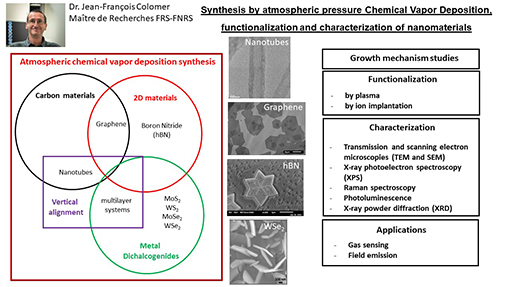Research Unit of Solid State Physics (LPS)
The research of the solid state physics unit focuses on the theoretical and experimental study of the electronic, optical and structural properties of nano-structured materials, surfaces and interfaces, based on experiments and numerical simulations. This interdisciplinary research is integrated in several institutes of the University of Namur NISM, NaXyS, PaTHs and uses the resources of several technological platforms PTCI, MorphIm, LOS.
Permanent MEMBerS
- Prof. Olivier Deparis, head of Research Unit
- Prof. Luc Henrard
- Prof. Yoann Olivier
- Prof. Emérite Philippe Lambin
- Dr. Jean-François Colomer
- Dr. Michaël Lobet
- Dr. Alexandre Mayer
HISTORy
Three eminent scientists, members of the Classe des Sciences of the Royal Academy of Belgium, are at the origin of the creation of the solid state physics research unit: Amand Lucas, Jean-Pol Vigneron (†2013), Philippe Lambin. Pioneers in surface and interface physics, their work has spilled over into several of the laboratory's current research themes, such as carbon nanostructures and photonic crystals.
Research Topics
We study natural photonic structures, in relation to the evolution of certain biological functions in the living world (e.g. structural coloration). We develop bio-inspired applications in the field of materials and, in particular, devices using solar energy. Finally, we use and develop optical techniques for the characterisation of materials for heritage sciences, in particular in the context of transdisciplinary research on parchments. recherches transdisciplinaires sur les parchemins.
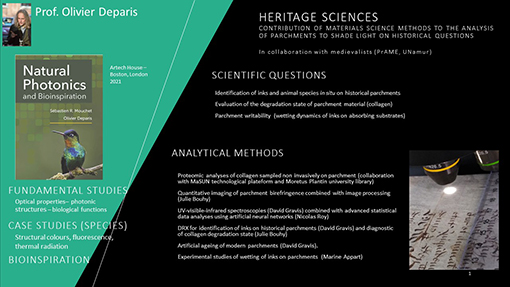
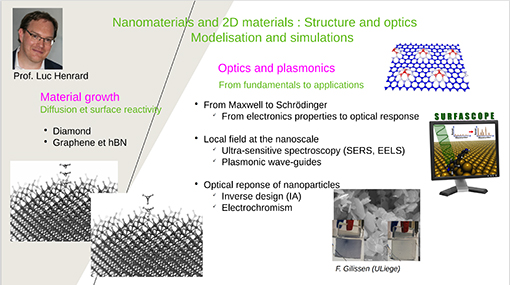
We study evolutionary methods for the optimisation of optical systems
The development of optical systems usually involves an optimisation step in which a set of parameters is sought that leads to maximum efficiency. The complexity of these optimisation problems increases exponentially with the number of parameters to be determined. We have developed evolutionary methods (genetic algorithms, PSO) to solve these optimisation problems more efficiently.
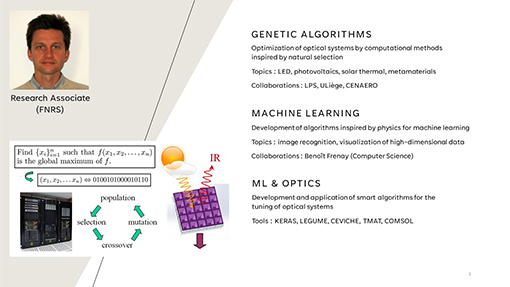
We study the properties of various photonic systems such as metamaterials, photonic crystals and plasmonic systems. Our expertise consists in the use and development of numerical codes in optics, coupled with models combining classical and quantum electrodynamics to study innovative and applied photonic systems. Particular attention is paid to the development of machine learning in photonics as well as to applications oriented towards "green photonics".
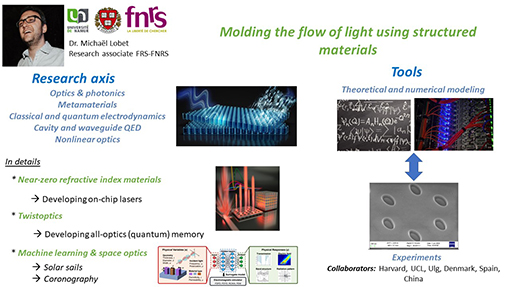
We study the synthesis by chemical vapour deposition (CVD) at atmospheric pressure and the characterisation of low dimensional materials, ranging from carbonaceous materials such as nanotubes or graphene to other 2D materials such as boron nitride (hBN) or transition metal dichalcogenides (MoS2, WSe2, etc...).
